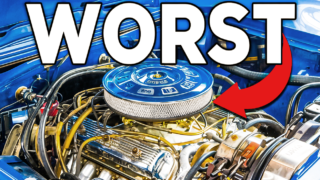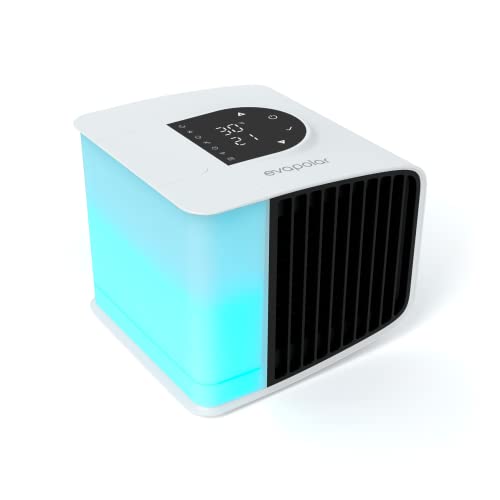Ever wonder why some cars seem cursed with endless repair bills? Deep within the engine bay lurks a costly secret that most mechanics won’t tell you about. These hidden flaws can turn your dream car into a financial nightmare faster than you can say “check engine light.” Engineers know which models to avoid, but this information rarely reaches everyday drivers. Their silence has cost car owners billions in repairs, but today we’re pulling back the curtain on the auto industry’s most catastrophic mistakes.
20. GM 2.4 L Quad 4

If you’ve ever wondered what automotive ambition sounds like, the Quad 4’s distinctive growl tells the story. This dual overhead cam design generated 150 horsepower, marking GM’s serious entry into advanced four-cylinder technology. Thermal stress on aluminum cylinder heads led to premature failures in 60% of early production units, particularly in 1988-1992 models. Today’s high-performance four-cylinder engines owe their existence to the lessons learned from this bold experiment, proving that sometimes you have to break a few head gaskets to make progress.
19. Chevrolet 2.2 L OHV inline 4

Ask any veteran mechanic about indestructible engines, and you’ll likely hear about the 2.2L OHV. Base outputs started at 110 horsepower, focusing on reliability over performance metrics. Maintenance costs averaged $500 for major services, contributing to widespread adoption across GM’s compact car lineup. While these engines might not win any races, they’ve won countless reliability arguments in repair shops nationwide, proving that sometimes boring is beautiful in engine design.
18. Cadillac V8-6-4

Imagine trying to teach a 1981 computer to juggle cylinders – that’s essentially what Cadillac attempted with the V8-6-4. Displacing 368 cubic inches, this ambitious system switched between eight, six, or four cylinders based on power demands. Production halted after just 25,000 units when the primitive electronics couldn’t manage smooth transitions. Modern cylinder deactivation systems in today’s vehicles prove Cadillac’s concept was decades ahead of its supporting technology.
17. Chrysler 2.7 L V6

The 2.7L V6 reads like a cautionary tale about good intentions meeting rushed development. Dual overhead cams delivered 200 horsepower while promising modern efficiency. Internal water pump placement and oil sludge affected 40% of units before revised service intervals took effect. Your mechanic might still use this engine as Exhibit A when preaching the gospel of religious oil changes.
16. Mitsubishi 3.0 L V6

Ever see a car with a distinctive blue smoke trail? Chances are you’ve spotted a Mitsubishi 3.0L V6 in the wild. This sophisticated powerplant produced 222 horsepower in naturally aspirated form, though valve guide seals proved its Achilles’ heel. Oil consumption reached 1 quart per 1,000 miles in affected units, and while revised components arrived in 1998, the engine had already written its smoky signature into automotive history.
15. Ford 4.2 L V8

Talk to any fleet manager from the ’90s about reliable workhorses, and the Ford 4.2L V8 enters the conversation. Output ratings achieved 202 horsepower and 275 lb-ft of torque, perfect for daily grunt work. Timing chain tensioner reliability became a concern after 100,000 miles, though proper maintenance often doubled that figure. These engines didn’t write hot rod history, but they wrote plenty of paychecks for their owners.
14. Triumph Stag V8

British engineering ambition met manufacturing reality in the Stag V8 program of 1970. Output reached 145 horsepower through sophisticated overhead camshaft design, though quality control had other ideas. Cast sand residue blocked critical coolant passages, creating a reputation for overheating that spawned a cottage industry of aftermarket solutions. Only 25,877 units left the factory, but their legacy lives on in every British car joke ever told.
13. Yugo 1.1 L inline 4

If reliability had a opposite, Yugo’s adaptation of Fiat’s inline-4 might claim the title. The 1985 launch promised 55 horsepower of Eastern European innovation, while the 40,000-mile timing belt interval kept mechanics on speed dial. When repair costs hit 50% of vehicle value, owners faced existential questions about automotive value. These engines taught a generation of mechanics that sometimes the best repair is a different car entirely.
12. Mazda 1.3 L Rotary Engine

Few engines inspire cult-like devotion quite like Mazda’s rotary. The 13B variant extracted an astounding 238 horsepower from just 1.3 liters, though apex seals demanded rebuilds at 80,000-mile intervals. Oil consumption averaged 1 quart per 1,000 miles, making gas station visits a social occasion. After 1.8 million units, Mazda proved that sometimes the most brilliant engineering solutions aren’t always the most practical ones.
11. GM 3.1 L V6

The 3.1L V6 wrote the book on mainstream American power in the 1990s. Output reached 160 horsepower with 185 lb-ft of torque, perfect for suburban cruising. Intake manifold gasket failures affected 35% of pre-1996 units, turning dealership waiting rooms into support groups. Your local parts store probably still stocks gasket sets out of habit, long after production ended.
10. Subaru 2.5 L Turbo Engine

Ask any performance enthusiast about living dangerously, and they’ll mention the EJ257 turbo. Producing 300 horsepower from the boxer configuration, this engine turned boost into adrenaline. Ringland failures struck 15% of units pushing beyond 18 PSI, while bearing wear demanded religious 3,750-mile oil changes. These engines taught a generation that with great power comes great repair bills.
9. Volkswagen 2.0 L TSI Engine

The EA888 program launched in 2008 as VW’s answer to modern efficiency demands. Delivering 220 horsepower through direct injection, it brought cutting-edge technology to the masses. Carbon buildup became a 60,000-mile ritual, while early timing chain tensioners played Russian roulette with 20% of pre-2013 engines. Today’s mechanics can spot a TSI owner by their nervous expression during timing chain discussions.
8. Pontiac 2.5 L Iron Duke Engine

The Iron Duke earned its medieval name through sheer stubbornness. Starting in 1977, this basic design delivered 110 horsepower with all the excitement of a tax return. Commercial applications regularly exceeded 200,000 miles, particularly in mail trucks that refused to die. When nuclear winter comes, cockroaches will be driving Iron Duke-powered vehicles, proving that simplicity has its own kind of brilliance.
7. Chrysler 2.0 LC Engine

The LC engine program of 1994 embodied the spirit of try, try again. Dual overhead cams squeezed 150 horsepower from this compact package, while head gasket failures affected 25% of early production. Plant-specific quality variations meant buying one was like playing mechanical lottery. If you see one with original head gaskets today, it belongs in a museum.
6. Ford 3.8 L V6 Engine

Ford’s Essex V6 arrived in 1982 as a study in continuous improvement. Output eventually reached 140 horsepower, though head gasket challenges kept mechanics’ kids in college. Replacement rates hit 30% by 75,000 miles, creating a thriving aftermarket parts industry. After 7 million units, these engines proved that persistence sometimes trumps perfection.
5. Suzuki 1.0 L 3 Cylinder Engine

The G10 program of 1989 answered a question nobody asked: how much engine do you really need? Delivering 55 horsepower and 45 MPG, it turned glacial acceleration into an art form. Oil consumption increased after 60,000 miles, though catastrophic failures remained rare. These tiny warriors taught us that sometimes the best engineering is just enough engineering.
4. Toyota 3.0 L V6 (3VZ)

Toyota’s reputation for invincibility met its match in the 3VZ program of 1988. Producing 150 horsepower, this truck engine challenged the company’s bulletproof reputation. Head gasket failure rates spiked after materials changes, affecting 28% of units before 100,000 miles. Every time you see a mechanic wince at the words “Toyota head gasket,” thank the 3VZ.
3. Rover K Series Engine

British engineering optimism peaked with 1989’s K-Series program. Squeezing 177 horsepower from 1.8 liters, it showcased aluminum construction when most competitors chose iron. Head gasket failures struck 40% of units before 60,000 miles, creating a special bond between owners and their mechanics. These engines proved that sometimes the brightest ideas need a few more meetings in development.
2. Chevrolet 305 V8

Emissions regulations forced Chevrolet’s hand with the 305 program in 1976. Making 230 horsepower from a restricted bore size, it embodied the malaise era’s challenges. Proper maintenance yielded 200,000-mile lifespans, while total production exceeded 10 million units. If you’ve ever wondered what compromise sounds like, the 305’s distinctive idle tells the story.
1. Saturn 1.9 LC Engine

Saturn’s lost-foam casting technology created the 1.9L engine in 1991, proving innovation comes in many forms. Initial output reached 124 horsepower, while oil consumption typically increased after 75,000 miles. The timing chain tensioner design kept mechanics guessing until production ended in 2002. These engines demonstrated that sometimes the most interesting engineering happens in the manufacturing process rather than the product itself.




























